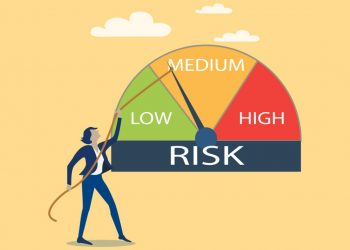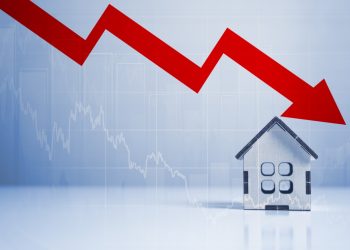Florida’s economy grew in 2017, and that positive momentum should continue in 2018, according to economists and business data experts who spoke to a crowd of about 500 REALTORS® at the recent 2018 Florida Real Estate Trends event, held during the Florida Realtors® Mid-Winter Business Meetings.
“For 2018, from a business point of view, Florida’s economy benefits from a growing population, strong and growing employment and a rising number of visitors,” said Dr. Tony Villamil, founder and principal advisor of The Washington Economics Group and a former U.S. Undersecretary of Commerce for Economic Affairs under President George H.W. Bush. “In fact, Florida is growing faster in terms of employment growth than the rest of the U.S., which is good for Florida real estate.”
Villamil noted the three major drivers of the state’s economy are: 1) Florida’s business climate, including real estate sales; 2) the U.S. economy and financial market trends; and 3) the global economy.
“Overall, Florida is a positive, pro-business climate state, and I don’t see that changing significantly,” Villamil said. “For U.S. economic activity, I see a lot of enthusiasm on tax reform and deregulation—the U.S. economy is poised for a strong performance this year. We’ll likely see about 3 percent growth in the GDP (Gross Domestic Product) for the U.S.”
Villamil added that Florida’s GDP growth in 2018 is likely to also be about 3 – 3.5 percent.
Global economic activity is rebounding from its sluggish performance and growing, especially in major markets like Brazil and Canada, Villamil noted. “Here in Florida, one of the sleepers is going to be India—it deserves a closer look.”
Another positive: Household net worth is at record levels, leaving consumers ready to spend, so real estate is in demand, Villamil added.
However, “One downer here is D.C. dysfunction,” Villamil cautioned. “In Washington, there’s a lot of animosity between the political parties. The key (for action) is going to be how we move toward less polarization between the parties. Florida’s economy depends on open markets. Looking at the global economy, in this area, I’m concerned about the administration’s policies.”
Other speakers who discussed trends for 2018 and beyond were Kevin Foreman, general manager of GeoAnalytics for INRIX Inc.; and Dr. Brad O’Connor, Florida Realtors® chief economist.
Foreman discussed how self-driving cars will impact real estate in the future, noting that there are currently about 7,000 on the roads, with that figure expected to reach 4.5 million by 2035. There are four trends in self-driving cars: autonomous (Tesla, Uber, Google and others are working on versions of autonomous cars); shared; electric; and connected. There are five levels of autonomy, including hands-on at level 1, hands-off at 2, eyes-off at 3, mind-off at 4, and no-wheel at 5.
At the Seattle office, INRIX offers the chance on a rotating basis to get to work using a Tesla autonomous vehicle, Foreman said.
“It’s really nice to go to work and be able to shave, to eat (with both hands) and check email…oh, yes, you’re all REALTORS®—you already do that,” Foreman said, earning laughs from the crowd.
Foreman added, “We as humans are starting to measure distance differently. It used to be in miles or kilometers. Now, it’s minutes—how long will it take me to get to the airport. Take a picture of traffic signals and milepost signs; they’ll be gone in 30 years. Now, many people want to search for homes in drive time, to see how long their commute would be to work, to school and so on.”
According to Foreman, with self-driving cars, the new landscape for real estate will include:
- No more speeding tickets
- No more drunk driving
- No more drivers’ licenses—the blind, elderly and kids can drive
- Distracted driving—more texting, sleeping
- Two-handed eating
- Longer “drive” times—people can eat, sleep, work during commutes
- Less office infrastructure
- More agent productivity
Wrapping up the event, Florida Realtors® Chief Economist Brad O’Connor took a look at what happened in Florida real estate in 2017 after Hurricane Irma, which made landfall on Cudjoe Key on Sept. 10, as a Category 4 with winds of more than 130 miles per hour. Prior to Irma, Florida had not been hit by a major (Category 3 or above) hurricane in about 10 years.
To analyze what Hurricane Irma’s long-term impact might be on the market, the Florida Realtors® Research Department reviewed residential real estate sales data from 2004 and 2005 (during the span of time when Hurricanes Charley, Frances, Jeanne, Ivan, Dennis and Wilma struck Florida), as well hurricane claims data from the Florida Office of Insurance Regulation.
“Long-term market impacts from landfalling hurricanes are rare and highly localized,” O’Connor said. “Long-term sales declines were observed only in coastal areas where a significant percentage of structures were severely damaged by Category 4-plus winds.”
Short-term market impacts from a hurricane are more common and widespread, O’Connor added.
“Sales in areas where most homes did not experience severe structural damage rebounded within a month or two of landfall,” O’Connor said. “These temporary slowdowns were due to business activity halting ahead of the storm and power outages, regulations and additional required inspections afterwards. Sale prices don’t seem to care much about hurricanes. Plenty of buyers are happy to line up to buy real estate as long as it’s not completely annihilated.”
Summarizing 2017 housing market activity, O’Connor said single-family existing home sales in Florida were up 1.2 percent over 2016’s sales level—and would have been up by about 3 percent if there had been no Irma. 2017 sales of existing condos and townhouses were up about 3 percent year-over-year, and would likely have been about 6 percent higher than 2016 without Irma. The statewide median price in both sectors was up about 8 percent compared to a year ago.
“Dollar volume is up, time on market is down and inventory is down,” O’Connor said. “It’s really inventory constraint that’s bringing sales down. Not only aren’t enough homes being built, but people who own their homes aren’t moving. They used to stay in a home on average about seven years, and that median has moved up to 11 years now.”
Source: Florida Realtors®
For the latest real estate news and trends, bookmark RISMedia.com.











